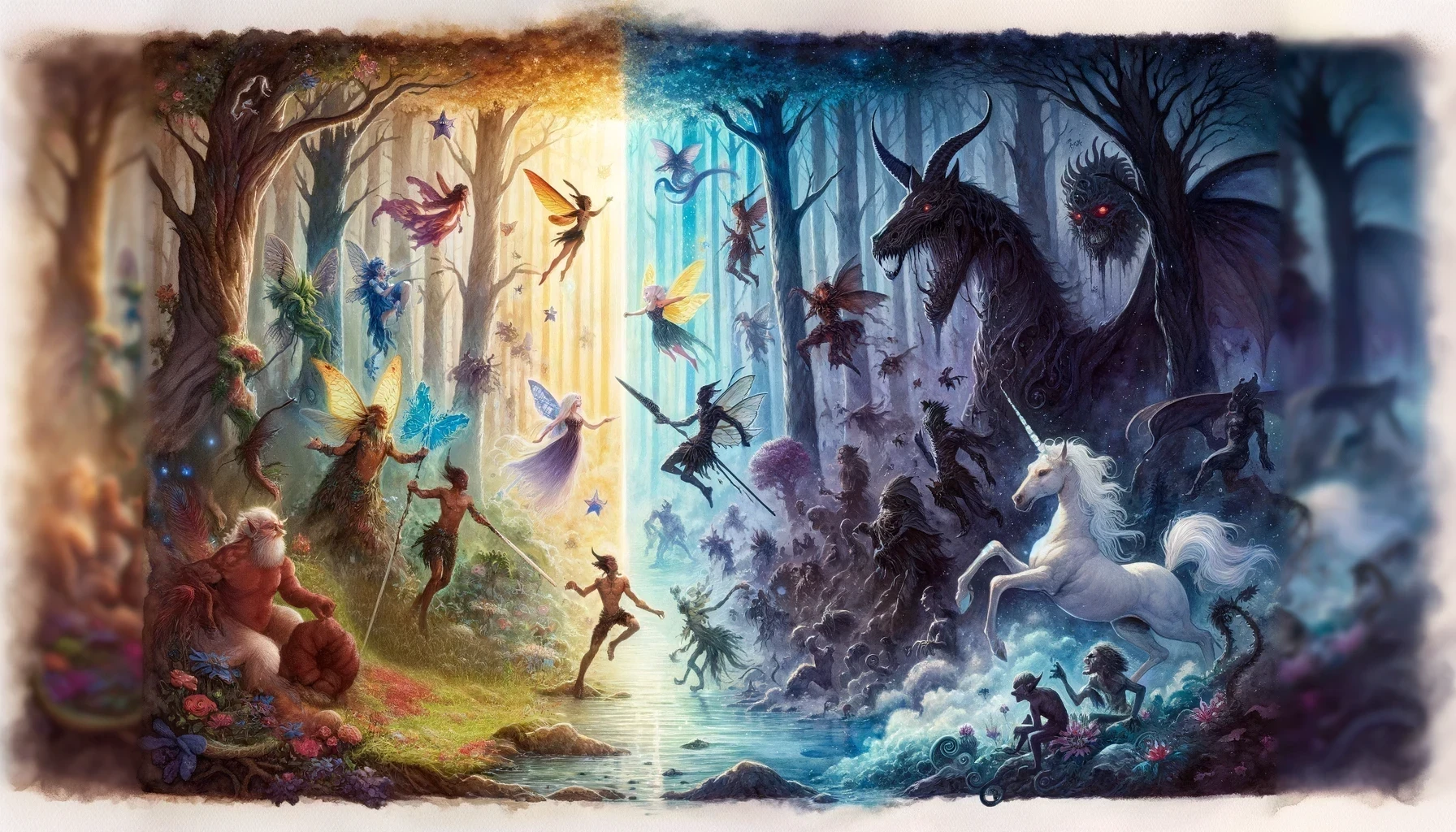top of page

The Clockwork Conspiracy
A busy steampunk cityscape scene



The Clockwork Conspiracy
A busy steampunk cityscape scene
1/4
D&D Level
Level
Definition:
-
Character Level: This refers to the total number of levels across all of a character's classes. It represents the character's overall power and experience. As characters participate in adventures and accumulate experience points (XP), they gain levels, which often unlock new abilities, increase hit points, and may provide improvements to ability scores and proficiency bonuses.
-
Class Level: This refers to the number of levels taken in a specific class. For instance, a character might be a Level 5 Wizard and a Level 2 Fighter, making them a Level 7 character overall. Each class has its unique progression of abilities, spells, or features that get unlocked as the character advances in that class's level.
-
Spell Level: The potency of a spell is often referred to as its "level". Spell levels range from 0 (also called cantrips) to 9. The spell's level impacts its effects, the difficulty of resisting it, and which spell slots a character must expend to cast it.
-
Dungeon Level: In dungeon-delving campaigns or scenarios, this refers to the depth of the dungeon. Higher (deeper) levels typically contain more dangerous creatures and better treasure. This term is contextually dependent on the campaign or adventure setting.
Examples of Usage:
-
Character Level: "After defeating the dragon, the party gained enough experience for all characters to reach level 10."
-
Class Level: "As a level 3 Rogue and level 2 Wizard, I have the flexibility of both stealth and magic."
-
Spell Level: "Cure Wounds is a level 1 spell, but if I cast it using a level 2 spell slot, it heals more hit points."
-
Dungeon Level: "The adventurers carefully descend to the third level of the dungeon, where they expect to encounter tougher enemies."
Important Considerations:
-
Levelling up a character in D&D requires careful consideration, especially for multiclass characters. The choice to gain a level in a new class versus an existing class can significantly impact a character's abilities and gameplay style.
-
Spellcasters must manage their spell slots effectively, balancing the use of high and low-level spells to ensure they're prepared for any situation.
-
Dungeon Masters (DMs) should consider the character party's average level when designing encounters and adventures, ensuring appropriate challenges and rewards.
Related Terms: XP (Experience Points), HP (Hit Points), Multiclassing, Spell Slot, Cantrip, Dungeon Master (DM)
Title: Maintaining Challenge While Levelling Up Characters in D&D
As a Dungeon Master (DM), one of your main responsibilities is to manage the balance of challenge and progress in your campaign. With each adventure, your player characters (PCs) accrue experience points (XP) and grow in power, sometimes resulting in a shift in the campaign's difficulty. Careful planning is essential to maintain the suspense and thrill of the game while allowing for character growth. This essay will discuss strategies for DMs to preserve challenge during adventures, despite the characters' level progression.
The first key aspect is encounter design. As characters level up, their ability to handle threats increases. It's your responsibility as the DM to ensure that encounters remain exciting and engaging. This doesn't always mean throwing stronger monsters at the PCs; instead, you can increase the complexity of the encounter. For instance, an evil wizard might start employing tactical illusions, or a group of goblins might ambush the party in a narrow passageway, using the terrain to their advantage. This way, you not only challenge the PCs' abilities but also their decision-making skills, creativity, and teamwork.
Next, consider the pacing of level advancement. D&D's XP system allows DMs to control how quickly characters level up. If you notice the adventures becoming too easy for the PCs, you might decide to slow down their XP gain slightly, allowing you to craft encounters that they find challenging for a longer time. However, do this sparingly to avoid frustrating players who look forward to leveling up. A better approach might be milestone leveling, where PCs level up after crucial points in the narrative, ensuring story progression and challenge remain hand-in-hand.
Another strategy lies in exploiting the PCs' weaknesses. Every character, regardless of their level, has vulnerabilities. A high-level wizard might have a low Strength saving throw, while a barbarian might struggle with Wisdom saving throws. Using enemies or traps that target these weaknesses can keep encounters challenging. It also encourages players to think more strategically and diversify their characters' abilities.
It's also crucial to remember the non-combat aspects of the game. Leveling up often focuses on combat abilities, but D&D is also about exploration, puzzle-solving, and social interaction. Perhaps a high-level character can easily defeat a city's guards, but can they navigate political intrigue or unravel the secrets of an ancient prophecy? Balancing combat encounters with non-combat challenges keeps the game varied and engaging, regardless of character level.
Lastly, you could introduce narrative consequences for the PCs' increasing power. As they become more renowned, they might attract the attention of powerful entities, both friendly and hostile. Perhaps a local lord requests their aid, a powerful monster seeks them out as worthy opponents, or an evil organization tries to thwart their actions. These developments can result in exciting adventures that challenge the PCs in new ways.
In conclusion, maintaining challenge during character level advancement in D&D requires creativity and balance. Enhance encounters' complexity, pace level progression thoughtfully, exploit character weaknesses, and don't forget non-combat challenges. Finally, weave the characters' growing power into the narrative to create new obstacles and opportunities. As a DM, your goal is to ensure your players feel their characters' growth while maintaining the thrill of overcoming difficult and meaningful challenges.
bottom of page




